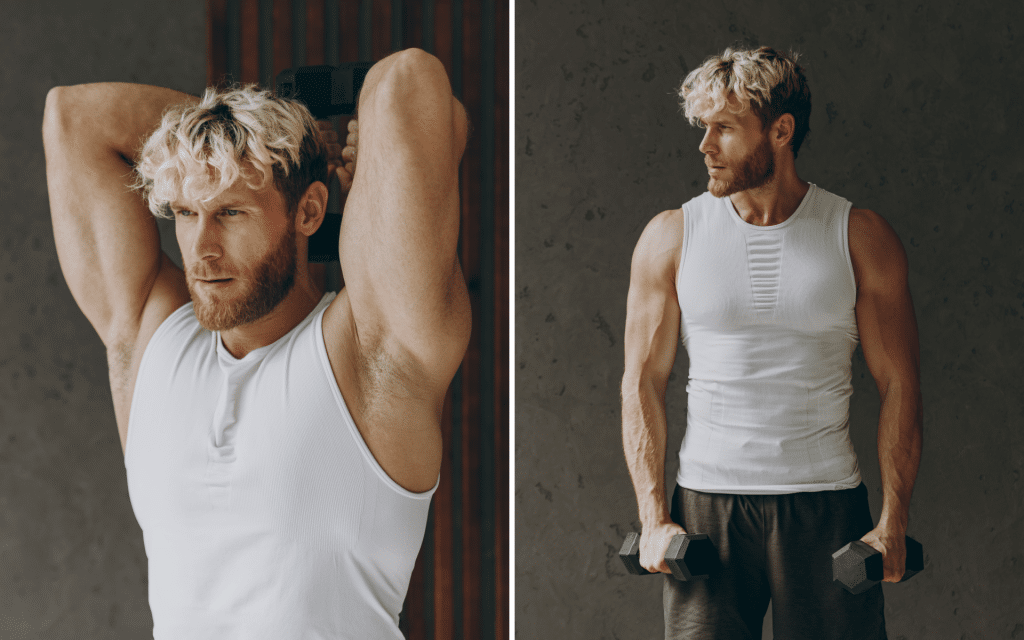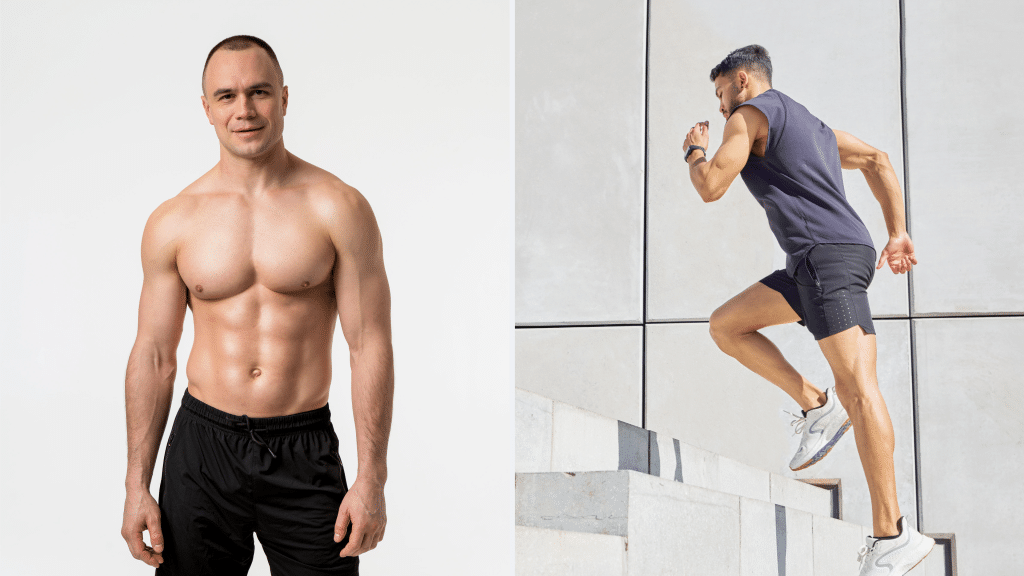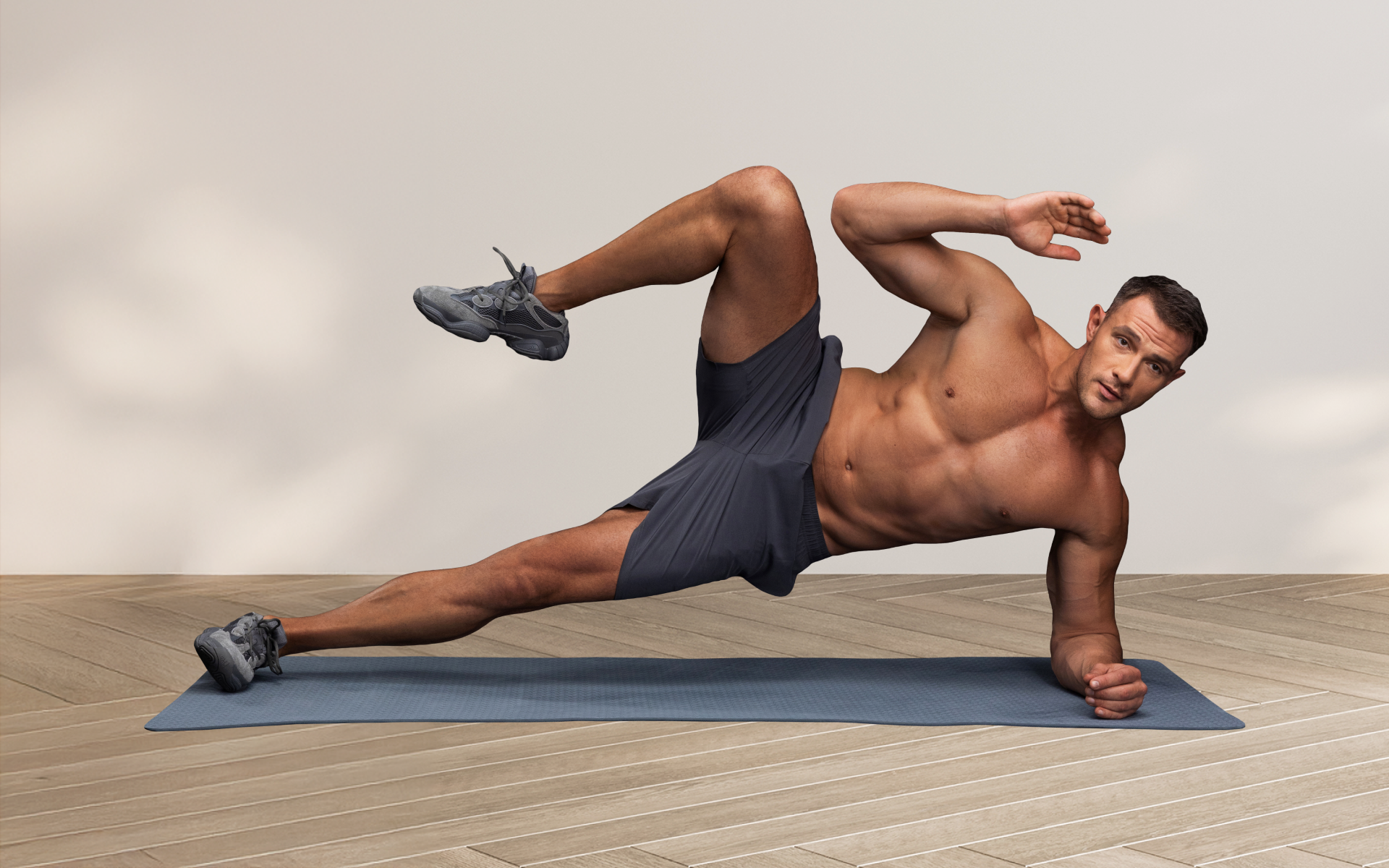It is human nature to classify things and ourselves based on various subjects.
This classification may explain why you encounter multiple topics, such as astrological signs, personality types, religion, sexual orientation, politics, etc.
One way we have classified ourselves is by body type.
An American philosopher and psychologist established the body type classification system in the early 20th century.
According to the psychologist, humans come in 3 main body types:
If you are thin, have long limbs, and find it rather hard to gain muscle or weight, then you can be classified as an ectomorph. Read on to learn more about an ectomorph workout and what you can do to gain muscle tone.
What Is An Ectomorph Workout?
An ectomorph workout plan is an exercise routine designed for people with the ectomorph body type.
If you find it difficult to gain weight or muscle, most fitness experts design ectomorph workouts to increase muscle mass, strength, and endurance.
Can Ectomorphs Build Muscle?
Yes, ectomorphs can build muscle. It may take longer than a mesomorph or endomorph, but it is not impossible.
With the proper diet and a well-thought-out, rigorous workout routine, an ectomorphic person can slowly but surely start to see some changes and muscle definition in their body.
What Exercise Is Best For Ectomorphs?
No single workout is best for people with this body type. Because they have such a hard time building muscle, the best approach is to engage more in resistance training workouts, which are the best way to build muscle mass, strength, and endurance.
If you wish to free yourself from all the extra pounds that have been weighing you down for way too long, start using the BetterMe: Health Coaching app and overhaul your entire life!
What Is The Best Workout Plan For An Ectomorph?
Here are some elements that should be in an ectomorph workout plan to gain muscle:
- A Proper Diet
No workout plan will ever be successful if the diet does not match.
If you do not align your eating with your fitness goals, all your efforts will be for nothing.
So, what does an ectomorph diet look like?
A person who wants to gain muscle must follow an eating plan with a caloric surplus, meaning they consume more calories than their body burns in a day.
Eating in this fashion and not exercising on top of it would increase body weight, especially fat.
Research states that you can eat on a calorie surplus and gain muscle as long as you exercise – something often seen in professional athletes and bodybuilders (3).
The professional fitness world calls it bulking: eating more calories and doing more resistance workouts.
This bulking practice aims to maximize gains in skeletal muscle mass while minimizing gains in fat mass. According to an older study published in the Sports Medicine journal, bodybuilders should be 55-60% carbohydrate, 25-30% protein, and 15-20% fat (4).
We suggest speaking to a professional to understand your macro intake and whether a high-carb or high-protein diet is better for your goal.
Aside from your macro intake, please keep your diet as clean as possible.
The saying that ‘ectomorphs can eat anything and everything’ will probably sabotage your efforts.
Eat more, yes, but make sure your foods are all made with whole foods such as the following:
- Healthy fats
- Whole grains/carbs
- Healthy lean protein
- Lots of fruits and vegetables
Read more: 7 Day Ectomorph Workout Plan To Build Mass
- Concentrate on Compound Workouts
An ectomorph workout at home or the gym should involve compound exercises.
Compound workouts use two or more joints and muscle groups simultaneously.
They are the opposite of isolation workouts, which usually target one muscle group at a time.
Neither workout is superior; isolation exercises can be part of a well-rounded workout routine. But for beginners, it is typically best to learn the basic compound movements before working towards isolating specific areas of the body.
Proper form is critical when exercising; building on basic movements will help in the long run.
Research shows that isolation and compound exercises help improve:
However, beginners are often encouraged to choose compound movements over isolation. The former is better at improving coordination, and because you use multiple muscles simultaneously, you can lift heavier weights, which is good for hypertrophy and strength.
Compound exercises include:
- Squats
- Deadlifts
- Pull-ups
- Pushups
- Bench presses
- And more
- Practice Progressive Overload
If the goal is to increase muscle mass, every strength training workout for women or men must include progressive overload. A progressive overload workout routine gradually increases the intensity of the exercises.
You can progressively overload in various ways, including:
- Increasing the weights used
- Increasing the number of reps done per workout (while keeping the number of sets the same)
- Increasing the number of sets done per workout – reps remain the same
- Increasing the overall duration of the workout – from 20 minutes to 30, 30 minutes to 45, 30 minutes to an hour, etc.
According to researchers, when you practice progressive overload, you constantly challenge your muscles to do more, preventing a plateau and leading to further muscular adaptations. I.e., your muscles can get bigger and stronger after every new challenge you give them (7, 8).
- Do Your Cardio
Some sources claim that ecomorphs should avoid cardio workouts and instead prefer resistance training. We disagree with this statement.
While people with this body type do need to prioritize resistance training, aerobics exercises are still good for overall health.
Cardio workouts are usually associated with weight and fat loss, but they also improve the following:
- Stress levels
- Mental health
- Blood pressure
- Heart and lung health
- Insulin sensitivity (9)
These exercises also reduce your risk of chronic illnesses (10).
Whether you’re a workout beast or just a beginner making your first foray into the world of fitness and dieting – BetterMe has a lot to offer to both newbies and experts! Install the app and experience the versatility first-hand!
Example Of Exercises That Ectomorphs Should Do
As mentioned above, an ectomorph workout routine should have cardio and resistance training compound exercises.
Examples of each include:
- Compound exercises – Burpees, body weight squats and their variations, mountain climbers, deadlifts, planks, reverse lunges and other lunge variations, push-ups, bicep curls, tricep dips, etc.
- Cardio exercises – Swimming, jump rope, hiking, jumping jacks, box jumps, jogging, walking, running, cycling, dancing, etc.
How Often Should Ectomorphs Workout?
A good rule of thumb for someone new to exercise is to aim for 3-4 weekly workouts.
Rest and a proper diet are vital because muscles only grow if the fibers can repair and recover. Muscle recovery can only happen if you rest enough and eat a good, high-quality protein diet.
If you are a beginner, let’s start with three days a week.
Pushing yourself past this can seem like a good idea, but it can put you at risk of overtraining (11). Start with three days and stick to this for a few weeks before attempting to increase the number of days. Remember to also eat at a calorie surplus.
Read more: Ectomorph Diet: A Foolproof Way To Outwit Your Genes
How Is An Ectomorph Workout Male Plan Different From An Ectomorph Workout Female Plan?
These exercise plans are the same. Workouts are not gendered, so if male and female exercisers wish to increase muscle strength, they can use the same exercises.
Can An Ectomorph Have Belly Fat?
Yes, they can. Everyone has belly fat regardless of body type.
While ectomorphs have more difficulty gaining weight or muscle, a sedentary lifestyle can cause even the person with the fastest metabolism to gain body fat, especially around the midsection.
We all hold our body fat in different regions based on genetics.
What Is The Best Protein Source For Ectomorphs?
Protein is an essential macronutrient for any diet, but it is crucial for anyone who wishes to increase their muscle mass.
The best protein sources for ectomorphs include:
- Legumes and lentils
- Soy and soy products
- Milk and dairy products
- Lean meats and poultry
- Whey protein or plant-based protein powders for any vegans or vegetarians
Not really. Ectomorphs must sleep 7-9 hours each night, the same amount of sleep that every adult – regardless of body type, is advised to rest. Research shows that sleep quality and duration can affect muscle gain, so fixing your sleep schedule is essential (12, 13). As previously stated, people with this body type often struggle to gain weight and build muscle mass, which can be frustrating if they desire to be curvier or look more muscular. Their fast metabolism works against them in this regard, so to change this, an Ectomorph can eat in a calorie surplus and aim to increase the frequency of resistance training. Being skinny doesn’t mean that you lack body fat. Everyone has body fat, and our body needs it to function properly. Exercise can help you lose fat in your midsection and any excess fat around your organs that doesn’t necessarily show up in the mirror. However, spot reduction of fat is not possible. No workout targets belly fat. Eating fewer daily calories than you burn will lead to overall body fat loss. Once you lose fat throughout your entire body, your stomach fat will also decrease. Yes, any body type will benefit from going to the gym. The gym has free weights and weight machines for strength training workouts. These weight options can help with progressive overload and lead to muscle mass gains.Frequently Asked Questions
Do ectomorphs need more sleep?
What are the disadvantages of being an ectomorph?
Why is my stomach big but I’m skinny?
Is ectomorph good for gym?
The Bottom Line
While the three body types aren’t exact science, they can help people learn more about themselves, how their bodies work, and what they can do to improve.
An ectomorph workout is a good way for any skinny person who wishes to gain muscle and improve their appearance.
Speak to a professional so they can guide you on all the dietary requirements and exercise steps to build your dream body.
DISCLAIMER:
This article is intended for general informational purposes only and does not serve to address individual circumstances. It is not a substitute for professional advice or help and should not be relied on for making any kind of decision-making. Any action taken as a direct or indirect result of the information in this article is entirely at your own risk and is your sole responsibility.
BetterMe, its content staff, and its medical advisors accept no responsibility for inaccuracies, errors, misstatements, inconsistencies, or omissions and specifically disclaim any liability, loss or risk, personal, professional or otherwise, which may be incurred as a consequence, directly or indirectly, of the use and/or application of any content.
You should always seek the advice of your physician or other qualified health provider with any questions you may have regarding a medical condition or your specific situation. Never disregard professional medical advice or delay seeking it because of BetterMe content. If you suspect or think you may have a medical emergency, call your doctor.
SOURCES:
- Sheldon’s Constitutional Theory: Somatotyping (2024, simplypsychology.org)
- William Sheldon (2024, britannica.com)
- The Effects of Overfeeding on Body Composition: The Role of Macronutrient Composition – A Narrative Review (2017, pmc.ncbi.nlm.nih.gov)
- Macronutrient considerations for the sport of bodybuilding (2004, pubmed.ncbi.nlm.nih.gov)
- Single vs. Multi-Joint Resistance Exercises: Effects on Muscle Strength and Hypertrophy (2015, pmc.ncbi.nlm.nih.gov)
- Resistance Training with Single vs. Multi-joint Exercises at Equal Total Load Volume: Effects on Body Composition, Cardiorespiratory Fitness, and Muscle Strength (2017, pmc.ncbi.nlm.nih.gov)
- Progressive overload without progressing load? The effects of load or repetition progression on muscular adaptations (2022, pmc.ncbi.nlm.nih.gov)
- Improving muscle size with Weider’s principle of progressive overload in non-performance athletes (2021, researchgate.net)
- Cardiovascular Effects and Benefits of Exercise (2018, pmc.ncbi.nlm.nih.gov)
- Health benefits of aerobic exercise (1991, pubmed.ncbi.nlm.nih.gov)
- Overtraining Syndrome (2012, pmc.ncbi.nlm.nih.gov)
- Effect of changes in sleeping behavior on skeletal muscle and fat mass: a retrospective cohort study (2023, bmcpublichealth.biomedcentral.com)
- Sleep, circadian biology and skeletal muscle interactions: Implications for metabolic health (2022, sciencedirect.com)










